A space last visited by the press for its opening day in 2007, Aston Martin’s design studio is “usually reserved for Royal Family and James Bond”, says its executive vice president and chief creative officer Marek Reichman.
When the Warwickshire studio opened, it was the first time the design team had its own building and space in the company’s 110-year history, becoming fully operative from 2008. Located close to the factory in its Gaydon headquarters, Reichman says it is only “a 45 second journey to go and see a car on the line” from the studio.
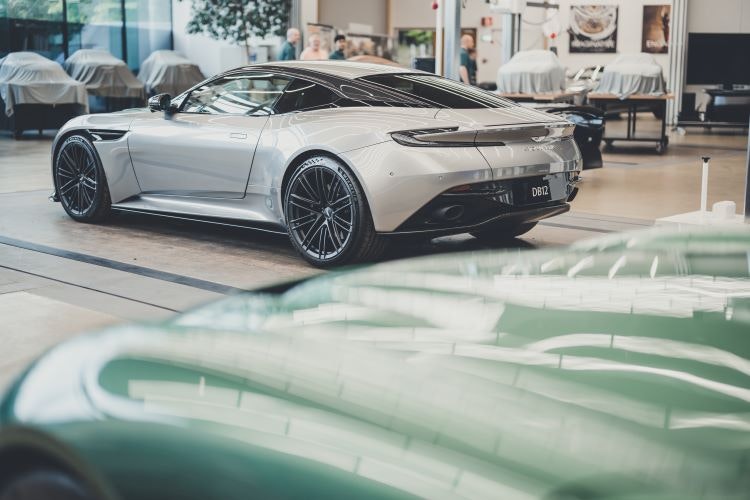
The Aston Martin DB series – taking its name from the manufacturer’s original owner David Brown – is one of the most valued lineages in the company. According to Reichman, the new DB12 super tourer has taken a massive step up from the DB11, from the improved 680 horsepower to “adaptive and control systems”, making it a “true driverless car”.
The whole DB interior concept has been overhauled with emphasis on the central display which features interactive content such as music controls and navigation, but if the driver would prefer to be in a “physical world”, they have the option to do that, he adds.

“A huge element of human interface”
Aston Martin currently has 65 designers working across 13 different areas, including exterior and interior design, UI design, parametric design, and digital and clay sculpture design. Unusually for the automotive industry, the Aston Martin design team comprises an equal number of men and women, according to its creative director Leighanne Earley.
Also unusual, considering they are responsible for some of the most high-tech hypercars on the road including the Valkyrie, is that the team still favour analogue design methods.
Reichman says there is “a huge element of human interface” used from conception through to realisation. “Your fingertips can feel about 40 microns, which is the thickness of a hair”, he adds, justifying why he sees the value of analogue methods over technology.
Cars near completion are often subjected to extreme lighting conditions within studios, creating “highlight patterns” so the team can “analyse the surface” by looking down on it from the studio’s balcony. Although this could be done with computer-aided systems, Reichman argues “the human eye” can sometimes better spot “where the inflection isn’t right”.
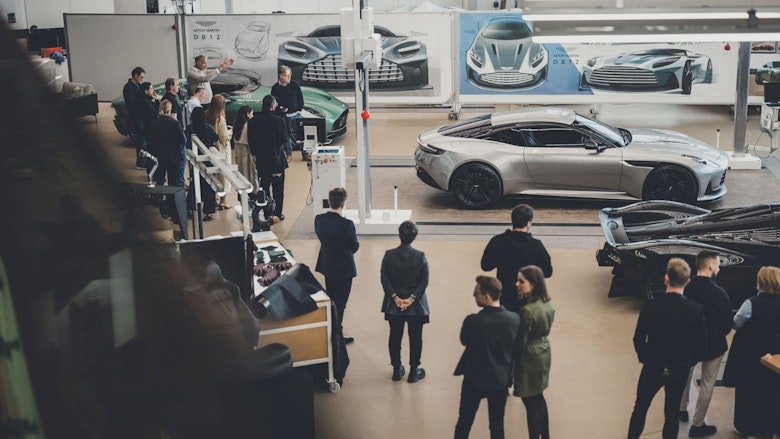
“Authenticity, precision, and materiality”
It typically takes around four years to design and manufacture an Aston Martin car, starting with sketches from the designers. Aston Martin director of design Miles Nurnberger reinforces that “everything is still done manually”, explaining that sketches are “fast and expressive”, whereas creating a render takes time.
Reichman describes the team’s three key considerations as “authenticity, precision and materiality”.
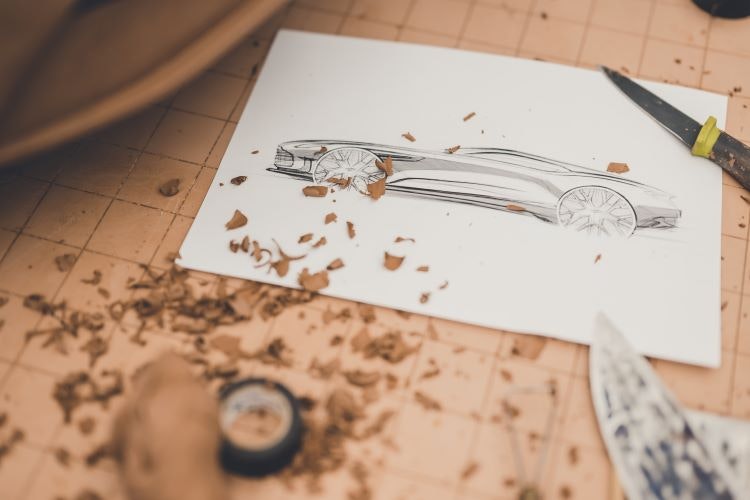
A few key elements make up “the golden ratio” of a car’s proportions, Nurnberger explains. Dash to axel is one element, which is the distance between the bottom of the A post and the front wheel, often giving cars their “sporty style”, he says. Other elements are the front overhang (how much metal sits over the wheel), cabin to body proportion, plan view, and the wheel to body ratio, which comes with “huge amounts of technical constraints”, Nurnberger adds.
“What you’re trying to do with wheel to body is get the perfect fit so everything is pushed to the millimetre and there’s an exact fit”, says Reichman. He adds that mass-produced cars do not push those boundaries as they work to “a generic section”.
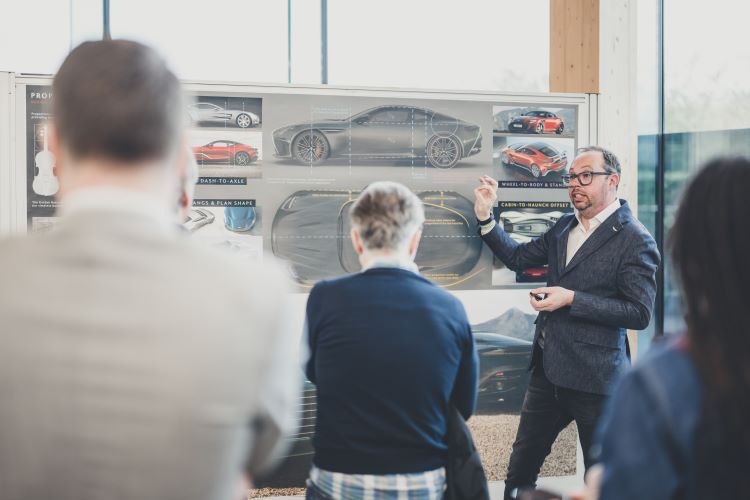
The DB12’s stance is 30mm wider than the DB11 and, while its predecessor can be considered “elegant and graceful”, Reichman says the DB12 has an additional element of “muscularity” in its body.
“Acceleration curves”
While they could be turned into digital renders, the modelling team also prefers to work from “high-quality sketches”, with the side view being the most important, according to GT & Specials chief designer Julian Nunn.
The modelling stage is often where mistakes are spotted, and certain features are tested to make sure they are possible. However, the main goal with clay modelling is deciding how to “accentuate the power” of the car using “acceleration curves”, says Nunn.
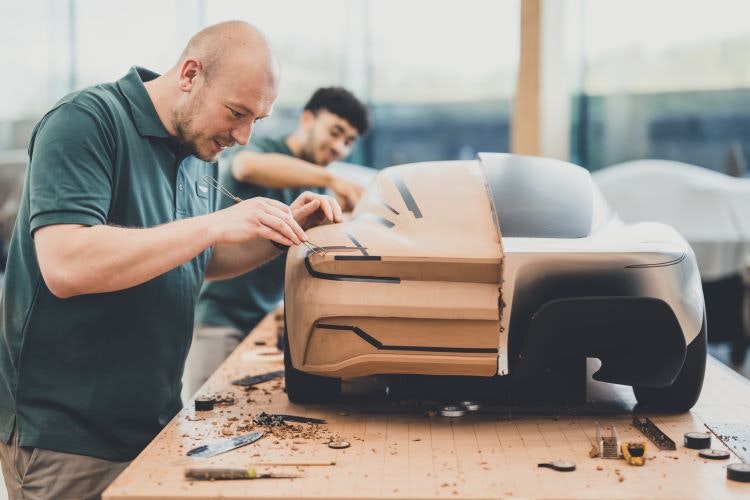
He explains that these curves are a kind of “cheat” to make the car look “lower, faster and wider”, as if it is moving while static. To illustrate an acceleration curve, Reichman describes when “a sprinter, ready to run, arches perfectly so you can tell which direction he’s heading in”.
Once something close to the desired look is achieved, the model is scanned to be made into a life-size version before undergoing adjustments.

“Driver-centric interiors”
Starting around a year into the process, interior designers at Aston Martin must work differently, using digital tools such as augmented reality (AR) as they “can’t see a space that is not there”, says Earley.
With the DB12, the designers sought to create a “driver-centric interior”, customisable depending on whether customers are performance- and tech-driven or prefer traditional luxury.
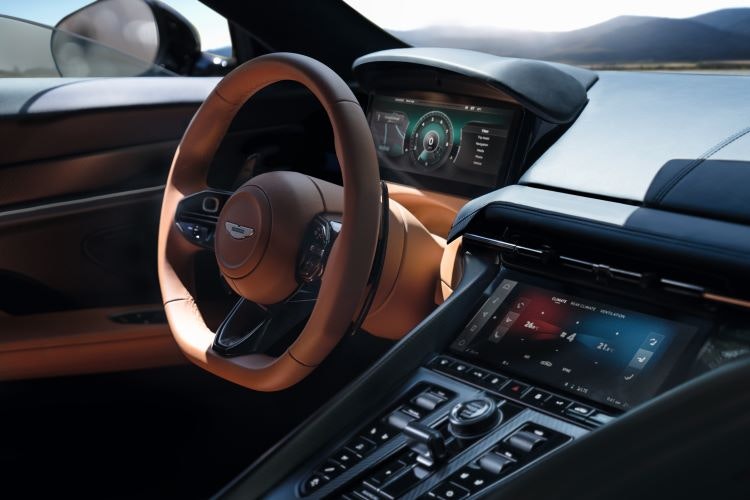
The seats invoke a similar look to luxury handbags, with the steering wheel rotary and centre console designed to be “jewel-like in their execution”, says Earley. Elements such as the Bowers & Wilkins audio system, technical detailing and machined aluminium parts were chosen to appeal to the performance-focused driver. Though the model is designed with an even mix of analogue and technical interior elements, Earley says that “luxury is choice” so everything inside the car can be customised to lean further into one aesthetic.
A mixed reality headset allows customers to sit inside the shell of a car interior, using augmented reality to view and edit colours and finishes to suit them.
Material and manufacturing innovations
Aston Martin’s head of colours, materials and finishes Jack Brown says that “every component on the car has an aesthetic attribute”. His job involves working closely with designers to find innovative material solutions and decide on manufacturing processes. For example, in the mid-engine series the cars are “all about performance” and favour materials such as lightweight paints and “super fine” titanium badges that sit under the lacquer of the car, says Brown.

While some companies were quick to abandon leather when its sustainability was called into question, Aston Martin took another approach, opting to work with Scottish leather manufacturer Bridge of Weir. All of Bridge of Weir’s raw hides come from local Scottish cows and all waste products are regenerated and turned into fuel to run the factories. In terms of logistics and traceability, its UK location means that Aston Martin does not have to ship them thousands of miles, significantly reducing its carbon footprint.
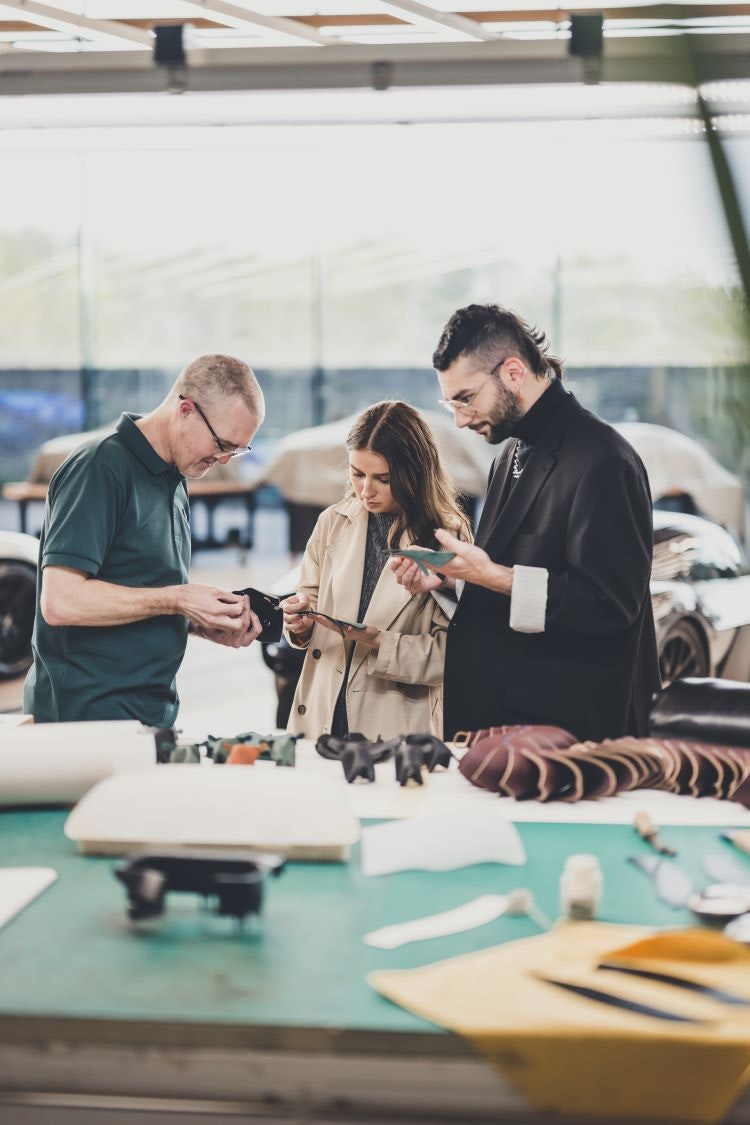
What’s next?
Earley mentions that Aston Martin are developing “the lightest GT sport seat in the world” using 3D printing and technologies used in the sports sector, as well as a fully vegan car interior using materials like cactus leather.
Although the design team often look to Aston Martin’s history for inspiration, its focus is constantly on innovation: “There’s a lot more windscreen than rear-view mirror”, says Reichman. He adds: “We are realists, but we will always try to find a way to make our vision happen and ask ourselves ‘How can we do something that feels impossible?’”

- Design disciplines in this article
- Industries in this article
- Brands in this article







